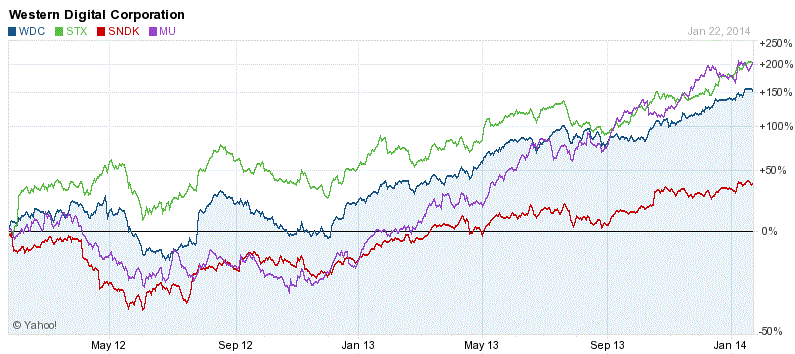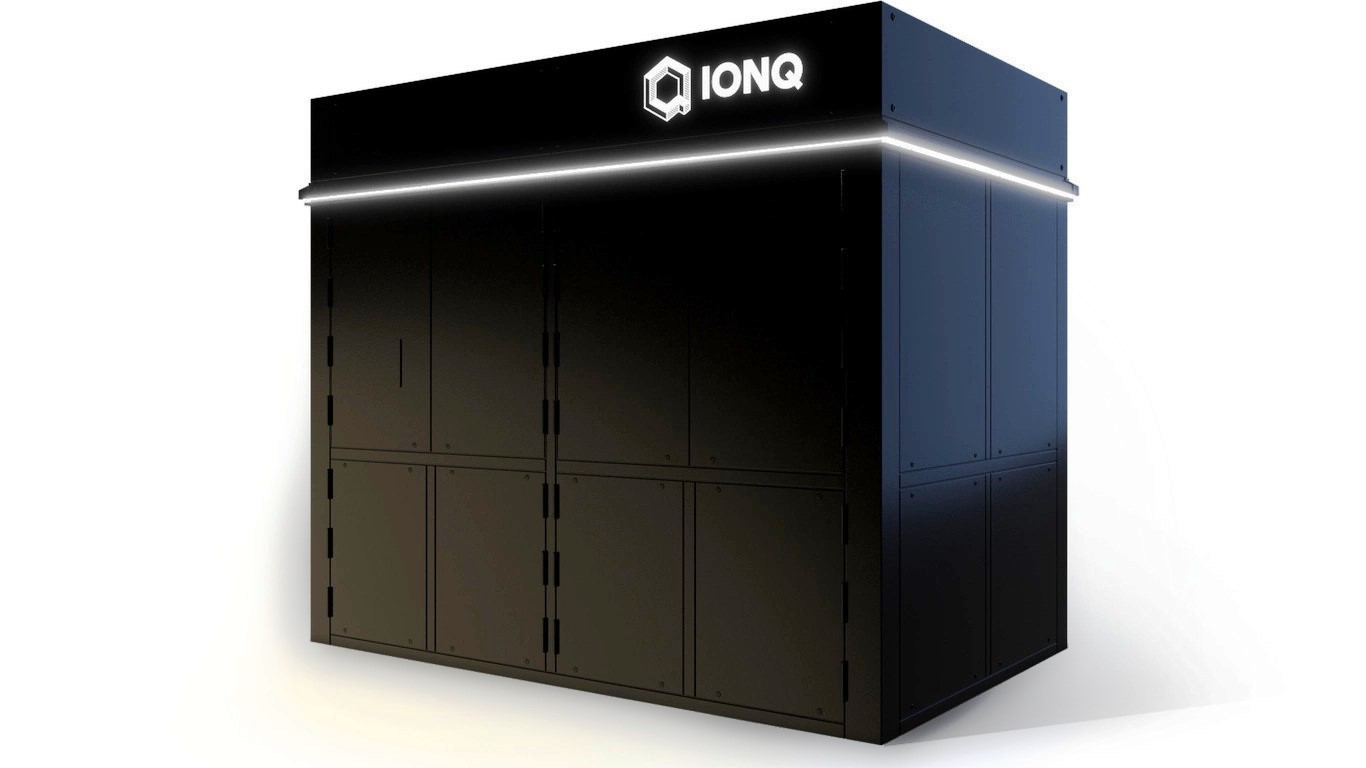The year 2014 is getting off to an interesting start. The Dow Jones Industrial Average rose more than 26% and the S&P 500 was up more than 29% in 2013, and the talk of a much-needed and overdue stock market correction seems to be gathering more steam. It also turns out that earnings season is proving to be very selective in terms of winners and losers.
At issue is whether it is time to start taking money off the table in the areas such as drives, storage and memory. These have enjoyed great gains, and investors who have been around the investment game have learned that the companies that dominate and play in these sectors often have big booms that are followed by a major decline in share prices. It has simply been part of the tech cycles of boom and bust.
This earnings season seems to be signaling something that is not yet reflected in shares of Western Digital Corp. (NASDAQ: WDC), Seagate Technology PLC (NASDAQ: STX), SanDisk Corp. (NASDAQ: SNDK) and perhaps even Micron Technology Inc. (NASDAQ: MU). You might even get to throw Intel Corp. (NASDAQ: INTC) under the same bus here after its earnings report.
Before we get into the nitty-gritty detail over the future of these stocks and sectors, there are still good things happening. The growth of the sector is not dead, and some players may see further gains ahead. One issue to really consider here is that these stocks generally have outperformed the broad market handily. Turnarounds have been realized, and valuations have gone significantly higher with the bull market.
Western Digital Corp. (NASDAQ: WDC) and Seagate Technology PLC (NASDAQ: STX) compete head to head for drive and storage markets. With declining PC sales and with one terabyte of external storage now available for $75.00, these companies have gobbled up competitors and are close to a duopoly now. The big concern is not that Western Digital beat earnings estimates, but that it warned on earnings by a slight amount ahead. Here are some considerations after the fact:
- Western Digital and Seagate both trade at close to 11 times expected earnings. This sounds cheap against the market, but the past concerns about the imminent death of disk drives due to flash drives once had these valued at five times earnings.
- Despite our concerns, a boutique brokerage firm named Craig-Hallum raised Western Digital’s rating to Buy from Neutral and gave it a $100 price target. Western Digital shares were down only 1% at $87.20.
- Western Digital and Seagate shares are both up close to 100% in the past year.
Then there is the issue around SanDisk Corp. (NASDAQ: SNDK). It beat earnings expectations of $1.58 per share by posting $1.71 per share, but its quarterly outlook did not come with raised guidance. SanDisk shares were up 50% over the past year and it has been more than 18 months since there was any valuation adjustment that hurt the stock. SanDisk trades at about 12 times earnings expectations for 2014.
We would point out that Needham & Company downgraded SanDisk to Buy from Strong Buy with a $90 price target after the report. SanDisk shares were down more than 2.5% and close to $70 mid-Thursday.
Micron Technology Inc. (NASDAQ: MU) has enjoyed a serious run in the past year. In fact, it is up more than 200% from the lows of 2013. Earnings confirmed that its turnaround was complete and that it is handily making profits again. Many analysts have even raised their price targets over the past week or so, after the DRAM (and now flash) giant beat earnings earlier in January. The analysts’ consensus price target is now more than $27, and some analysts expect the stock to rise to more than $30 over the coming year. Shares saw a 1% drop to $23.40 on Thursday, and the 52-week range is $7.54 to $24.50.
Intel Corp. (NASDAQ: INTC) is in a different boat than all these companies. It is still a ways off from being able to have significant claims in the mobile processor space. Its earnings and guidance failed to impress Wall Street, and the stock is going on a five-day slide. Intel tried to signal a basing in the PC market, but this remains up for debate. The stock also trades at more than 13 times expected 2014 earnings despite no growth or limited growth, but Intel does have that 3.5% dividend yield working for it. Intel is in processing, but the ties to PC sales and its ambitions in systems, mobile and other electronics puts Intel perhaps in the same crosshairs as the memory, storage and drives markets.
These technology markets are not immune from being in a serious state of flux. Hopefully the chart below will show the performance metrics in recent years amply to give investors one more bit of data before they determine whether to take money off the table in these names.
24/7 Wall St. does expect the broad market and the technology sector to rise in 2014, albeit at a more modest pace than 2013. We also cannot help but to say just how overdue this market is for a correction. A correction of any magnitude would likely not treat any of the storage, drives and memory names too well. Maybe locking in all the gains and taking all the money off the table is going too far, but taking some profits off the table after the gains we have seen may not be the worst idea in the world.
Below is a one-year chart and two-year chart from Yahoo! Finance showing the gains and how much some corrections take out. First is the one-year chart, second is the two-year chart.
Thank you for reading! Have some feedback for us?
Contact the 24/7 Wall St. editorial team.







